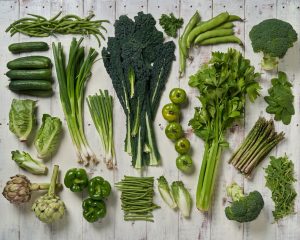The advice to eat more fruit and vegetables will likely always be a staple of nutrition recommendations, but how much do you really need? As it turns out, there may be a specific breakdown of how many servings of each you need to increase your longevity, according to a recent study in the journal Circulation. Researchers compared data on 26 studies that involved eating habits of 1.9 million people from 29 countries and up to 30 years of follow-up. They found that five servings per day seems to be the magic number when it comes to reducing your risk of early death, split up into two servings of fruit and three servings of vegetables. Surprisingly, those who ate more than five servings didn’t see additional benefits in terms of longer life. Those in the study who consumed at least five servings had a 13-percent lower risk of death from all causes, and that was particularly notable with respiratory disease, coming in at 35 percent lower risk of death from a condition like chronic obstructive pulmonary disease (COPD). In the research, not all fruits and vegetables were considered the same. Researchers noted that fruit juices and starchy vegetables, such as corn and potatoes, didn’t offer the same longevity boost when compared to more vitamin-rich choices, such as berries, citrus fruits, and green, leafy vegetables (such as kale and chard/sawi merah). But does that mean eating more than five servings of these good-for-you picks is a bust? Not exactly, according to dietitian Kara Hoerr, who added that the results do seem to imply that disease risk levels off after that point. However, 95% of Malaysian adults eat less than five servings of vegetables and fruits a day, she said, so the focus shouldn’t be on cutting back. “The more vegetables or fruits you consume in a day, the fewer processed or less healthy foods you’ll be eating,” she said. “Our goal should be to consume at least five servings, and even if you do reach a cap for reducing risk for chronic diseases, it doesn’t mean it’s harmful to consume more than that.” Another factor not covered in the study is that people who eat higher amounts may be consuming excess calories overall, which on its own could scuttle some health benefits, added dietitian Erin Kenney. However there is a threshold effect to some degree. Similar to “peeing out” higher doses of vitamin supplements that aren’t absorbed into your system, your body has limits with certain components of fruits and vegetables, like carotenoids (plant pigments responsible for the red, yellow and orange colours in certain fruits and vegetables), vitamin C, and polyphenols (micronutrients found in plants that help fight certain diseases). There’s only so much you can absorb and store at one time, said Kenney. Even with that, though, she recommends leaning on the higher end because the amount of fibre is hugely beneficial, particularly for a healthy gut microbiome. One consideration with the approach of loading up on fruits and vegetables, though, is the need to find a balance, added Hoerr. “Fruits and vegetables are great but so are protein-based foods, whole grains, and healthy fats,” she said. “If you’re consuming far more than five servings per day, you’re not leaving enough room for these other foods that provide essential nutrients not found in fruits and vegetables.” Conclusions: In order to reduce your risk of early death, it’s best to consume 5 servings a day of fruits and vegetables, split up into 2 servings of fruit and 3 servings of vegetables, according to new research. This is because for some of the nutrients in fruits and vegetables, your body can only absorb so much of them at a time. The nutrients in fruit and vegetables play a role in reducing your risk of conditions such as respiratory disease and chronic obstructive pulmonary disease (COPD). Article credit - Elizabeth Millard; https://www.runnersworld.com/news/a35873777/how-many-servings-of-fruits-and-vegetables-study/

Running Articles
What to do after you’ve run a marathon in order to recover faster
Congratulations! Now that you’ve done all the hard work, including the months of training, and completed a marathon, it’s time to give yourself a little




